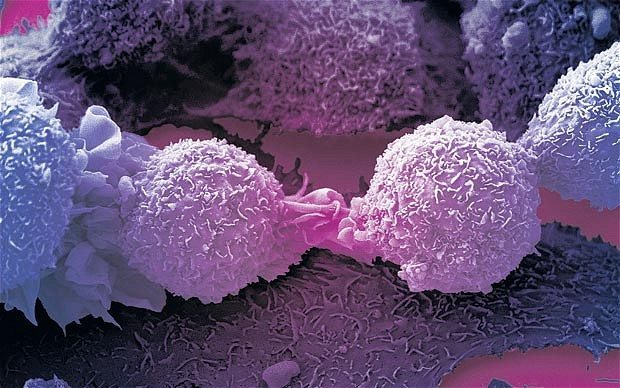
We are now into the final quarter of 2016, and there looks set to be plenty of activity across the biotech space before the year draws to a close. Companies with a range of target indications have near-term catalysts, but some of the most volatility inducing are rooted in oncology. Here are three companies with fourth quarter catalysts in the cancer space, which we feel have some upside potential.
DelMar Pharmaceuticals Inc (NASDAQ:DMPI)
Let’s kick things off with DelMar. This company is developing a host of different target assets, but by far the most advanced, and the one that we are interested in for the purposes of this discussion, is a brain cancer target called VAL-083. It is a chemotherapy agent, but not in the traditional sense. At least, that is, its mechanism of action differs from standard chemotherapy agents, and it’s this difference that makes it interesting.
The drug is able to form DNA cross-links in tumor cells, and then halt progression of the cell’s replication process at what is called the S phase – the phase at which the DNA in the cell is copied before division. This is fatal for tumor cells, but not for healthy cells (at least not to a particularly high degree). The upside of this is that the drug can be used to target cancers while minimizing toxicity, and in turn, the side effects associated with traditional chemotherapy agents.
There is also the potential for a combination treatment with a type of drug called a topoisomerase inhibitor (TOPO inhibitor). TOPO inhibitors are already pretty widely used in cancer treatment, but their mechanism of action requires that they hold a tumor cells in its S phase in order to do the damage. This requires quite high dosing levels, and sustaining those levels can be toxic for a patient. VAL-083 makes the cell stay at the required stage of replication, so that lower active levels of the inhibitor could potentially be used – efficacy maintained, toxicity reduced.
So what is the catalyst on which we are focusing?
As mentioned, DelMar is currently investigating VAL-083 in a brain cancer indication, and the company reported some great data earlier this from a phase 2 trial. A post trial meeting with the FDA put in place a framework that will form the base of a pivotal, and this pivotal (assuming all runs smoothly) will form the basis of a new drug application (NDA). We are looking to the initiation of the phase 3 as a major upside catalyst, and we expect it before the close of the year. One to watch.
Celldex Therapeutics, Inc. (NASDAQ:CLDX)
Moving on, let’s now look at Celldex. The company is developing a drug called Glembatumumab vedotin, which is a fully-human monoclonal antibody-drug conjugate (ADC) that targets what’s called glycoprotein NMB (gpNMB). The mechanism of action for this drug is relatively complex, but to simplify, it’s an antibody that targets the aforementioned protein, linked to a toxic component called monomethyl auristatin E (MMAE). The antibody targets the glycoprotein, and transports the toxic components to cancerous cells. The MMAE gets released once the drug is in the cells, and kills them from the inside. This means that the treatment can be highly selective, and in turn, that it need not have the devastating safety profile of traditional cancer agents. Right now, it’s a melanoma target, and Celldex is set to present phase 2 data at the upcoming European Society for Medical Oncology (ESMO) meeting. This event is one of the hottest events on the biotech calendar, and the abstract from Celldex’s presentation should hit press early Wednesday morning. If the data is positive (and we expect it will be, since the company is presenting at ESMO) there should be some immediate upside value in it for Celldex and its holders.
Pfizer Inc. (NYSE:PFE)
While there is plenty of upside reward on offer for the two above companies if the catalysts run in their favor, we are going to close out this list with a slightly less risky opportunity rooted in big Pharma. Pfizer just closed out on its acquisition of Medivation. The latter has developed a prostate cancer drug called Xtandi, which is currently approved for treating patients with prostate cancer that had previously undergone chemotherapy. Earlier this year, however, the FDA accepted a supplemental new drug application that compiles data showing Xtandi to be safe and effective in patients that have yet to receive chemotherapy.
The PDUFA for the application is October 22, 2016, and an agency green light would immediately serve up some upside for Pfizer based on the expanded potential market. The drug does a little over $300 million in sales in the US quarterly, but this will dramatically increase if Pfizer gets the go ahead to market to chemo-naive patients.
The company has taken some flak of late based on markets perceiving a potential over-valuation in the $14 million deal that saw it pick up Medivation and, by proxy, Xtandi. An FDA nod for the expansion would validate the price paid, to some degree, and that makes it an important event for Pfizer.
There’s not as much upside on offer here as there is for the Cellldex and DelMar, but the depth of Pfizer’s operations limits the downside somewhat, making it an attractive opportunity for a risk mitigated event play.




